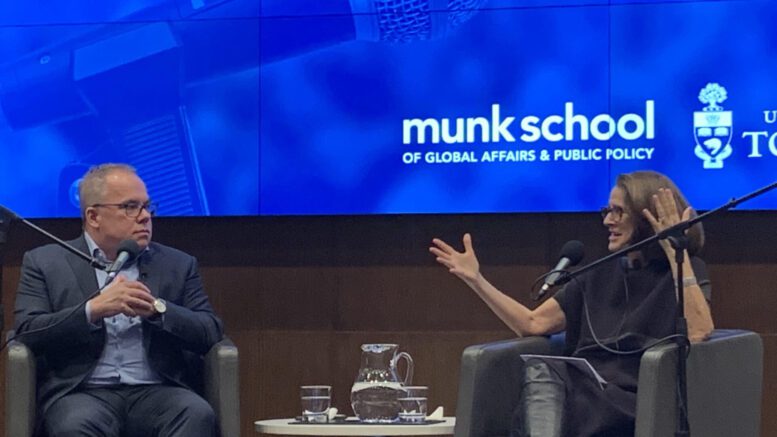The McMichael Canadian Art Collection paints a picture of Canada’s relationship with Indigenous Peoples that illustrates its dark past, but also how far it has come, according to the McMichael Canadian Art Collection’s chief curator.
Sarah Milroy discussed McMichael’s history with Indigenous artwork and how art shows the relationship between Canada and Indigenous Peoples during a recent taping of The Paul Wells Show in Toronto.
“I think one thing that’s so interesting about Canada is the way it deploys Indigenous culture in its brand,” said Milroy.
She went on to tell a story about in 1927 when artwork that was stolen by the Canadian government during the potlatch ban, which was implemented as a part of the Indian Act between 1884 and 1951.
“Things were being stolen off the coast by the Canadian government and then presented as the wonderful mystical art of our country’s Indigenous people,” Milroy said.
She wants the collection to be a platform for social change. Now, the McMichael Canadian Art Collection is actively working towards reconciliation with Indigenous Peoples. Part of the plan is an exhibit on Meryl McMaster, a Cree photographer based out of Ottawa, which opened in February.
The exhibition Early Days: Indigenous Art at the McMichael is also touring to Quebec City and several U.S. locations, including Albuquerque, N.M., and Norfolk, Va. It includes the first Indigenous-made object that joined the collection: a Tsimshian mask from the Skeena Valley in B.C. that A.Y. Jackson bought in 1926.
Canada has a dark history with their Indigenous Peoples in part because of the residential school system that led to thousands of Indigenous children being taken from their families and many never returned from the schools.
“Just down the hill from the McMichael there were thousands of Indigenous remains of the Wendat people that were gathered from various university collections from years ago in the unmarked site,” Milroy said.

